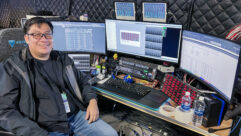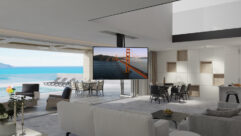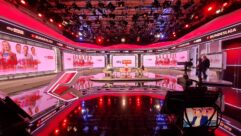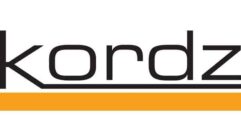
Installation Profile: Overtime in Athens
Nov 1, 2004 12:00 PM,
By Trevor Boyer
Before a highly successful 2004 Summer Games, construction and AV installations at Olympic venues came down to the wire.
As with any Olympics host country, Greece faced the prospect of constructing dozens of new venues and refurbishing old ones. Some, like the $76 million Karaiskaki Stadium, on the site of the velodrome for the original 1896 Olympics and completely rebuilt as a modern, 33,000-capacity soccer stadium for the 2004 games, will remain a permanent fixture of Athens. Others, like the Vouliagmeni Olympic Centre southeast of Athens, which hosted the triathlon, were consigned to a temporary fate.
With 11 million residents, Greece is the smallest country to host the Olympics in 50 years. It had the added challenge of hosting the first Summer Games since Sept. 11, 2001. Greece reportedly spent more than $1 billion on security and more than $10 billion total: Much of the latter going toward new stadium construction. Lakis Papapaschos of the Athens-based audio firm Omikron Control says price was indeed an object when it came to designing audio systems. The Olympic Committee wanted, “not only the best, but the best performance for price,” he says.
LOCAL CONTROL
Omikron Control is the distributor of Telex products in Greece. Telex markets its audio products under many brand names, such as Midas and Electro-Voice (EV). EV products were installed or ready to be used at 22 of the 24 Olympic venues, according to Telex.
Electro-Voice MH-640AP and RX-115 speakers, installed by Athens-based Omikron Control, contributed to the party atmosphere at the Olympic Beach Volleyball Arena on the Mediterranean shore.
Omikron Control provided at least 20 Midas mixers, which included Venice 160, 240, and 320 models. Every one of the sites for which Omikron supplied equipment got Electro-Voice speakers, amplifiers, and microphones. Permanent venues included the Beach Volleyball Centre, the Faliro Sports Pavilion, and the Olympic [field] Hockey Centre.
Papapaschos says that he decided on the SX600PI speakers he would recommend for the Olympic venues on a trip to the Telex headquarters outside of Minneapolis at the end of 2002. He was there to view the new EV XLC series, but another set of speakers mounted on a tower — “tall, thin, lightweight, that were for announcements,” he says — caught his attention. The SX600PI became the basis for many of the Athens venues’ sound reinforcement systems.
It was no surprise to Omikron that every Olympic venue presented its own challenges. There were the construction delays that affected installers. In addition, many stadiums had non-permanent seating constructed in response to late ticket sales. In many of these cases, Omikron installed long-throw speakers that threw sound from under the grandstand to uncovered seating across the field of play. At the horse dressage venue, however, this was not an option. Any audio more than 90dB would scare the horses. The solution there was to mount speakers on four 43ft. poles to relay the sound.
Another problem in this arena was that the marching dressage horses responded to the music playing over the sound reinforcement system. Here, EV’s remote monitoring and control software, IRIS, came into play.
“We had in IRIS a small program [in which] we balanced the total SPL of the arena, minus-plus 6dB, with the movement of the horse,” says Papapaschos. An operator adjusted levels live in IRIS for the loudspeakers at the four corners of the arena, depending on where the horse was at any given time.
At the Beach Volleyball Centre, 20 EV QRx 115/75 two-way full-range speakers were installed under the stripe-like balcony that provided shade for some of the seats. Nineteen EV MH-640AP large-format horns blasted to the arena and to seating not under the grandstand. Amplifiers were nine each of EV Q66 and Q44. At the 16,000-capacity beach volleyball stadium both wired and wireless microphones were from EV, and the audio mixer was a Midas Venice 320.
A special type of sand was imported from the Netherlands and every month was replaced at the Beach Volleyball Centre. Ironically, the venue sits right on the Mediterranean Sea. Beach volleyball, with its fast action and statuesque athletes competing in bikinis, was a particularly festive venue. Papapaschos says that with techno cranked to 110dB (in spite of the 100 ±3dB SPL specified for most venues), the atmosphere was that of a disco.
THE CROWN JEWEL
Jack Morton Public Events of London produced the opening and closing ceremonies of the 2004 Summer Olympics. On Aug. 13, more than 70,000 people witnessed the opening ceremony live at the Olympic Stadium, and an estimated 4 billion around the globe watched from home.
During the “Allegory” section of the opening ceremony, eight Barco XLM H25 video projectors threw images onto eight floating “rock fragments” to mark periods of Greek history. Creative Technology of London designed and installed the projection system, which used Catalyst moving heads that were mounted to each projector, rotating them through 90 degrees to follow the 26ft.-high fragments as they moved through the stadium. Synchronous video playback was from eight channels of Dataton Watchout. Each image was projected at a wide 1280×720, digitally masked to fit the abstract shape of the rocks.
Before the splashy ceremonies could be staged, however, the 20-year-old Olympic Stadium underwent an extensive makeover that involved new construction and a new sound reinforcement system. The Olympic Stadium had hosted many international sporting events before the 2004 Summer Games, but the Athens Organizing Committee (ATHOC) wanted to show a fresh face to the world.
Despite pressure from the International Olympic Committee, which was concerned about the construction timetable, ATHOC pressed on with its plan to construct an impressive new steel and glass roof for the stadium. The two parts of the arc-like glass roof had to be pulled into place slowly to within 8in. of each other. The glass of the roof was designed to allow light to pass through, but not heat. The second half of the roof was not in place until June. Until it was ready, other work on the stadium, which also hosted soccer and track and field events, had to wait.
For the stadium’s audio installation needs, ATHOC tapped Australian company Norwest Productions, which had experience with sound reinforcement during the 2000 Summer Games in Sydney, alongside Athens-based firm Enttech SA. Norwest based its chosen sound reinforcement system on EAW’s KF860 virtual line array system supplemented by McCauley MLA3s for the upper decks.
The EAW portion of the system was made up of 64 EAW KF860 and KF861 virtual line array systems and 36 EAW BH760 subs. The 32 array clusters, each consisting of a KF860, a KF861, and a BH760, were ground stacked around the circumference of the bowl. To widen the coverage of the 860 and 861 arrays at either end of the stadium and to penetrate the areas behind the stages, Norwest deployed four EAW KF750 full-range cabinets (each partnered by a BH760).
“We opted for the KF860 and 861 horn-loaded virtual line array solution for the simple reason that there is no other product in the world that does what they do in clusters of two,” Norwest CEO Chris Kennedy says. Conventional line arrays would have been unacceptably tall, with four or six loudspeaker cabinets per stack.
The Monarc MLA3 mid-scale line array hung in clusters of seven around the upper decks of the stadium. Sixteen clusters hung from the stadium’s roof structure, for a total of 112 modules. In addition, Monarc MS6 flown subwoofer modules were hung in groups of four around the stadium for low-frequency reinforcement.
“This event is really more like a fixed installation, in that there is no teardown or setup from one day to the next,” says McCauley engineering specialist Ryan Finley of the opening and closing ceremonies. “For the Olympics Stadium, the Monarc MLA3 was chosen because it did the best job at bringing highly coherent and intelligible coverage to every person in the audience.”
A total of 212 Lab.gruppen fP6400 amplifiers where chosen to deliver power to the Monarc line array speakers and to the EAW KF860 speakers. An Optocore fiber-optic system distributed signals to the system. Microphones were Audio-Technica Artist Elite 5000 Series wireless systems and 40 Series condenser microphones. All sources were fed into a Yamaha PM1D (for the FOH) and a PM5D console (monitors). A second identical unit backed each console. TC Electronic’s System 6000 frames provided effects.
Salzbrenner Stagetec Mediagroup, a Buttenheim, Germany-based designer of audio networks, implemented the digital audio network for the speakers and the control and monitoring components. A Nexus routing system, with I/O boards connecting it to a CAS control and management system, controlled interfaces for monitoring of the entire system. Announcements, playbacks, and other audio signals were fed from the stadium control room and forwarded to the speaker system amplifiers.
The Olympic Stadium was divided into 24 zones with separately addressed and monitored speaker groups. Salzbrenner defined presets for the CAS system to allow for easy addressing of individual zones or groups of zones. This would be important in emergency situations, when specialized messages to different zones might be necessary.
Salzbrenner was affected by construction delays on stadiums leading up to the Olympics. Though the group began planning on the project 18 months before the games began, Salzbrenner was pressed for time as the time for the opening ceremonies approached. To expedite the plans, the company preconfigured a large part of the audio network at its headquarters in Buttenheim.
Salzbrenner created for the system in Athens a “fallback” line to the computer system in Buttenheim, allowing for remote software support and maintenance from Germany. With this in place, there was no need for an engineer to be present in Athens.
THE TECHNOLOGY SPONSOR

The Olympic Field Hockey Stadium, with its EV SX600-PI and EV FRX940 speakers.
Other systems in Athens did not have state-of-the-art remote monitoring software associated with them. This is true of the Panasonic Astrovision LED screens that served as scoreboards and replay devices at many of the stadiums. If any component of these displays were to go down, maintenance people were onsite and ready to make repairs and replace parts.
Panasonic has been one of the 11 global sponsors of the Olympics since the 1988 games in Seoul. The company’s sponsorship takes the form of both cash and technology, and Panasonic is the official technology sponsor for audio/video. Even before becoming a top sponsor, Panasonic was supplying its Astrovision boards to the games starting in 1984, when the displays’ technology was FDT (fluorescent diode tube) rather than LED. After the 1996 Olympics in Atlanta, LED became the dominant technology.
The LED screens are bright enough — at 5,000cd/m2 — to overcome the direct sunlight of Athens in August. A total of eight screens were installed at seven different sports venues, and two temporary screens were installed at the Regatta Center and the (field) Hockey Center. Two truck-mounted screens traveled among five sports venues, and two temporary Astrovisions delivered visual information to the Common Domain in the Athens Olympic Sports Complex at Maroussi and the Water Plaza in the Faliro Coastal Zone.
The most massive Astrovisions were installed at the Olympic Stadium. At 26.44’×45.34′, they total 365.8ft.2 in screen area each, with an aspect ratio of 5.1:3. Panasonic rates their maximum viewing distance at 793.9ft.
Another prominent location for the screens was the historic Panathinaiko Stadium, the horseshoe of stone steps that served as the final destination of the marathon. One of the mobile signs entertained viewers there with images of the entire marathon, leading up to the finish at the Panathinaiko. This sign, at 15.12’×20.14′, also served events such as archery and the triathlon.
Venue management (under the auspices of ATHOC) was responsible for providing content for the screens. That content included a direct camera feed of the event, information about the athletes, scoring, times, etc. Cameras sent images as a broadcast signal over cable to the Astrovisions, which the screens processed internally and displayed.
Panasonic also supplied 153 Ramsa audio systems to 33 venues in Athens, both sports stadiums and other facilities such as the Athletes’ Village and the International Broadcast Center. The Ramsa brand, active in Europe but not in the United States, includes mixers, signal processors, amplifiers, microphones, and speakers.
Amptown Sound & Communication of Hamburg, Germany, integrated the Ramsa systems in arenas such as the hockey and archery venues and the Panathinaiko Stadium. This was a new line of large-format line array speakers designed specially for the large venues found at the Athens Olympic Games. In total, more than 1,200 speakers and 200 audio decks were installed. Equipment was shipped from Japan partially put together, and pre-assembly work started in April in Athens at a rented warehouse.
“Everything just gets pushed back and pushed back,” says Terry Shorrock, director of shows and events for Panasonic. “Once the green light is given to go ahead, then the amount of time that generally is allowed in this type of installation is greatly restricted, and so you’ve just had to add more people and work overtime.”
As with the other installations, however, everything got done before the starting gun was fired. Despite the initial delays and uncertainty, the Athens Olympic Games were secure, construction was complete, and the party was a rousing success.
Trevor Boyeris video technology editor with Sound & Video Contractor. He can be reached at[email protected].
For More Information
Audio-Technica
www.audiotechnica.com
Barco
www.barco.com
Dataton
www.dataton.com
EAW
www.eaw.com
Electro-Voice
www.electrovoice.com
Jack Morton Public Events
www.jackmorton.com
Lab.gruppen
www.labgruppen.se
McCauley Sound
www.mccauleysound.com
Omikron Control
http://users.hol.gr/~omikbu
Optocore
www.optocore.com
Panasonic
www.panasonic.com
TC Electronic
www.tcelectronic.com
Telex
www.telex.com
Yamaha
www.yamaha.com










